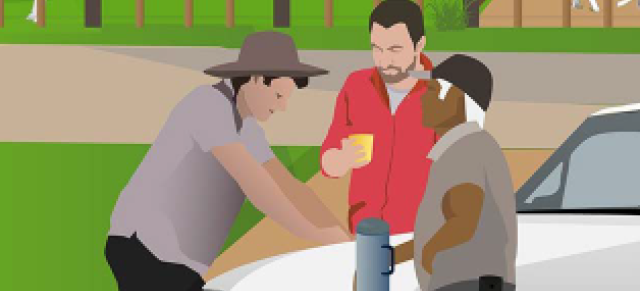Contamination can be readily brought onto and spread around your farm by visitors, their vehicles or via equipment that has been used on other farms or at sale yards.
Recommended practices
- Keep the farm, yards and storage areas clean, tidy and free of vermin.
- Limit the unnecessary movement of people, pets and vehicles onto and around the property, especially the areas where animals are kept.
- Minimise the number of entry points and restrict uncontrolled access to the rest of the farm.
- Define and, where appropriate, signpost ‘permitted access areas’ for farm visitors (e.g. veterinarians, livestock agents, feed and fencing contractors, shearers) and delivery and pick-up vehicles (e.g. stock trucks). Notify these operators prior to entry.
- Where direct contact with animals has occurred, clean and disinfect yourself, vehicles and equipment.
- Encourage the use of protective clothing and personal cleanliness when visitors move onto your property. Remember, young children are at particularly high risk of contracting serious gastrointestinal illnesses from contact with stock and animal faeces on-farm.
- Provide facilities (e.g. hoses, disinfectant, brushes etc.) in ‘permitted access areas’ for farm contractors and visitors to clean boots and equipment on arrival and before departure.
- Consider including a farm visitor register that records who has visited, purpose of the visit and where on the farm they visited.
- Ensure appropriate signage is available to inform visitors of your biosecurity requirements and what you want them to do on arrival.
- Do not share injecting and dosing/drenching equipment with other farms.
- Only share vehicles and equipment with other properties if you all agree to clean and/or disinfect them before and after use.
- Require contractors coming onto your property to comply with the National Pest Control Authorities ‘Keep It Clean’ guidelines for machine hygiene.


